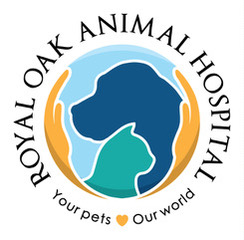Library
-
Esafoxolaner + eprinomectin + praziquantel is given topically on the skin to treat and protect against various internal and external parasites and prevent heartworm in cats. Side effects are rare but may include hair loss at the application site, gastrointestinal upset, skin reactions, or neurologic signs. Use caution in sick or underweight cats. If a negative reaction occurs, please call your veterinary office.
-
Esomeprazole is a proton-pump inhibitor antacid used to treat stomach ulcers in cats, dogs, and horses. It is used off label (extra label) in veterinary medicine. Esomeprazole comes in capsule and tablet forms.
-
Esophageal tumors are extremely rare but more often than not malignant type tumors. The cause is unknown but cases in tropical environments may be due to infection by the worm Spirocerca lupi. Treatment options are limited as surgical complications are high due to the advanced nature of the disease at time of diagnosis.
-
Esophagostomy tubes are placed through the skin of the neck into the esophagus to enable ongoing nutrition in cats that either refuse to eat or are unable to chew and swallow food. A diet will be recommended by your veterinarian but must be liquefied with water before it can pass through the tube. Medications can also be administered through the tube. Step-by-step instructions are provided. The decision to remove the tube will be determined by your veterinarian.
-
Esophagostomy tubes are placed through the skin of the neck into the esophagus to enable ongoing nutrition in dogs that either refuse to eat or are unable to chew and swallow food. A diet will be recommended by your veterinarian but must be liquefied with water before it can pass through the tube. Medications can also be administered through the tube. Step-by-step instructions are provided. The decision to remove the tube will be determined by your veterinarian.
-
Many liquid potpourri products and essential oils are poisonous to cats, including oil of cinnamon, citrus, pennyroyal, peppermint, pine, sweet birch, tea tree (melaleuca), wintergreen, and ylang ylang. Both ingestion and skin exposure can be toxic.
-
Many liquid potpourri products and essential oils are poisonous to dogs, including oil of cinnamon, citrus, pennyroyal, peppermint, pine, sweet birch, tea tree (melaleuca), wintergreen, and ylang ylang. Both ingestion and skin exposure can be toxic.
-
Estriol (brand name Incurin®) is a natural estrogen used to treat urinary incontinence and other diseases responsive to estrogen. Estriol is given by mouth in the form of a tablet or a compounded capsule, liquid tablet, or chewable tablet. This article discusses how this medication is given, potential side effects, risks, and monitoring.
-
Female cats have their first estrous (reproductive or heat) cycle when they reach puberty (sexual maturity). Each cycle consists of several stages; the stage called estrus refers to when the female can become pregnant. This handout explains the cycle stages and signs.
-
Female dogs have their first estrous (reproductive or heat) cycle when they reach puberty (sexual maturity). Each cycle consists of several stages; the stage called estrus refers to when the female can become pregnant. This handout explains the cycle stages and signs.


